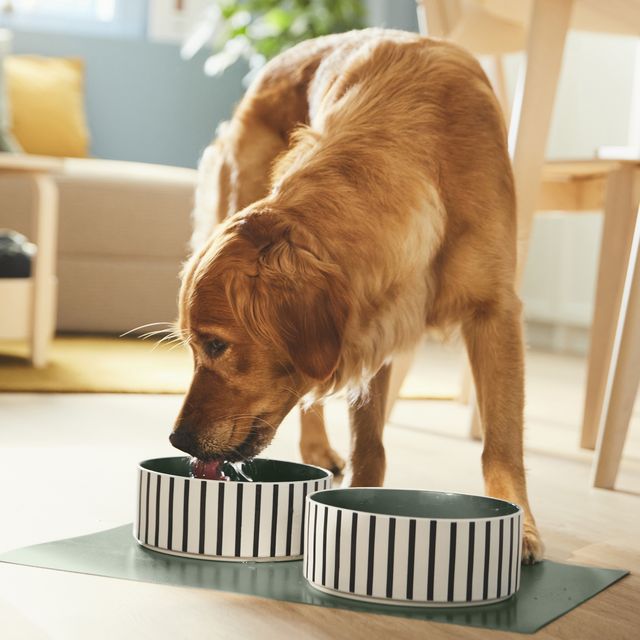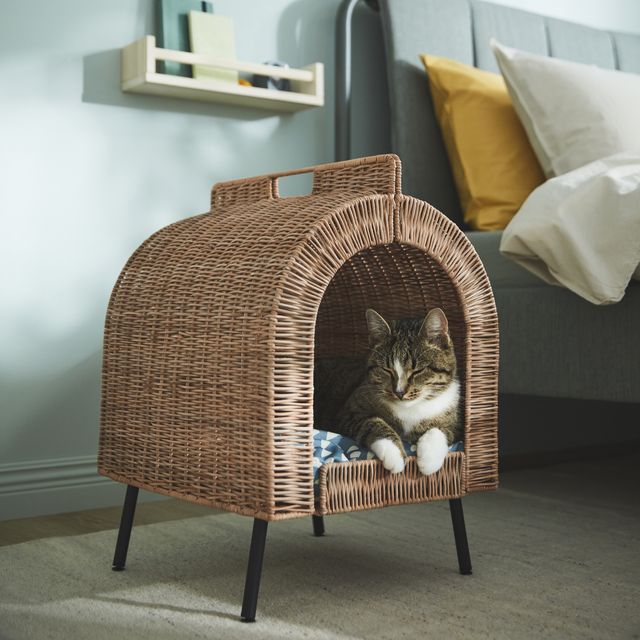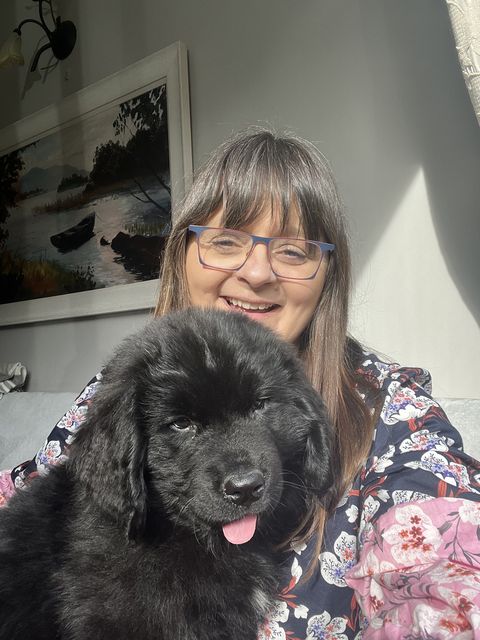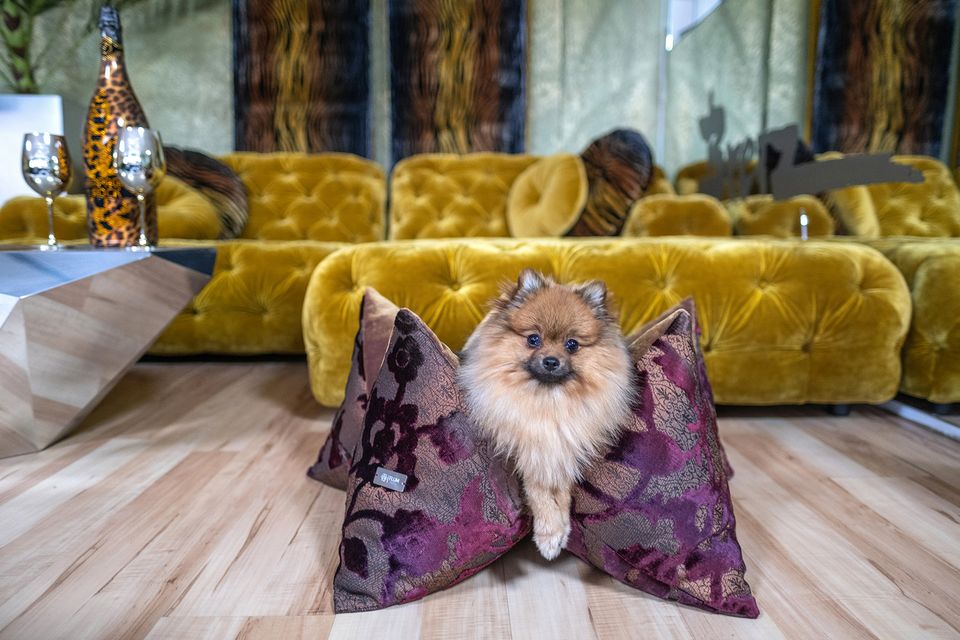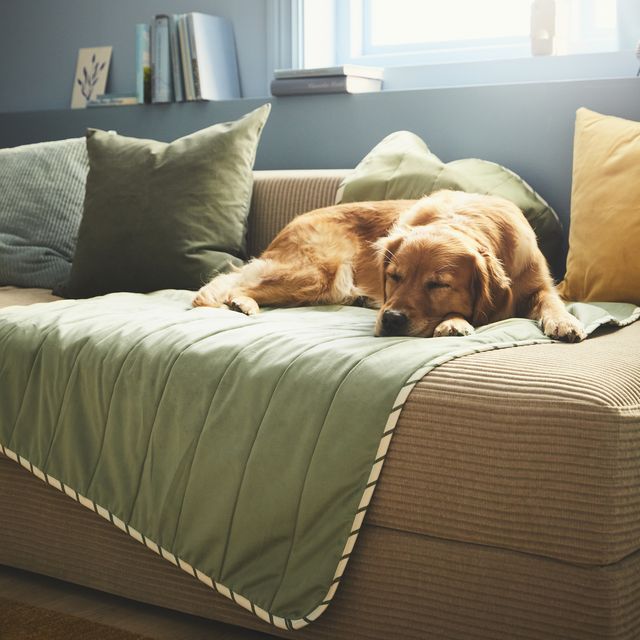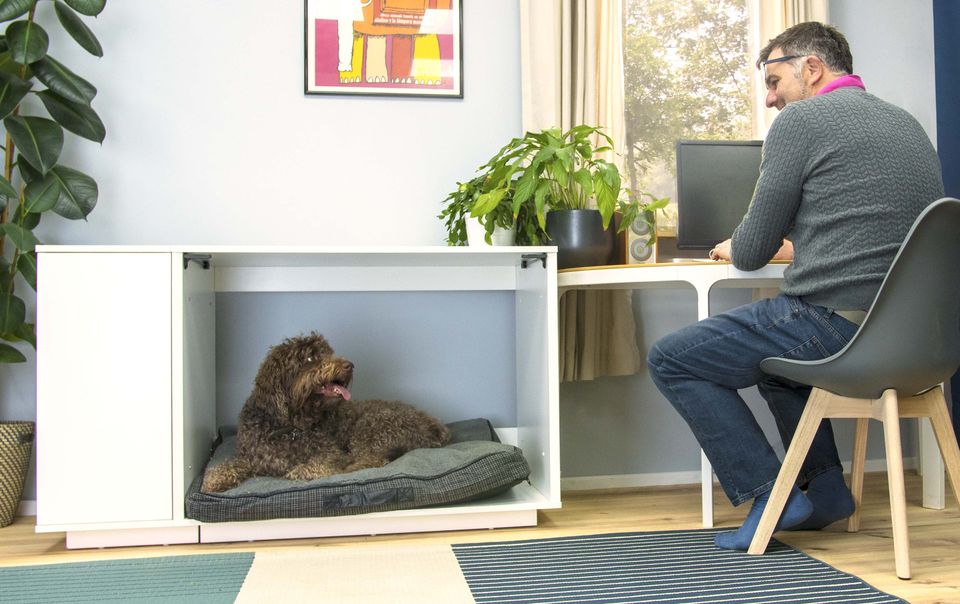When you live with furry friends, practical considerations will always be key – but that doesn’t mean your decor has to be dull
Today’s pets often live indoors and need, at the most basic level, a feeding bowl and a bed.
Many families also love to shop for pet accessories: scratching boards and hidey holes for cats; chewy toys and cushions for dogs. It’s a market ripe for the plucking.
The Utsådd collection is relatively small — 29 carefully thought-out products — and replaces Ikea’s former pet range, the Lurvig collection.
Lurvig (meaning furry) was released in 2017 but was never available in Ireland. It includes a miniature version of the iconic Klippan sofa, a whimsical piece that sadly didn’t make it into the current collection.
Other Lurvig classics, such as the cat bed (€5) that fits into the Kallax cabinet, have moved into the Utsådd range.
“We want a retake,” says Julia Rosenberg, product design developer at IKEA, Sweden. “We wanted to contextualize the collection to make it more focused and developed in the home furnishing aspect.
“We noticed during the Covid era that so many families were buying pets. That’s when we started exploring ideas and getting insights from vets and other experts.”
The product testing panel includes a carefully selected committee of pets. “I learned a lot about cats and dogs!” said Rosenberg. She doesn’t have any pets of her own but she would like to have a dog.
Pet bowls from Ikea’s Utsådd collection
Instead of cute miniature versions of furniture designed for humans, Rosenberg and the team took a closer look at what home life looks like for cats and dogs.
“We want to focus on basic activities: eat, sleep, play and hide.” This approach, he explains, takes Ikea’s existing expertise in home furnishings, and transfers it to items designed for animals.
Products need to be safe and durable. “We worked with a design language that makes the products versatile, to mix them with what you already have in a home.”
Within the Utsådd collection, Rosenberg’s favorites are the food bowls (€3 for a cat-sized bowl and €7 for a dog).
They are made of ceramic in easy-to-revive colors and are a great example of an inexpensive product with a lot of thought behind it. “I like the expression,” he said.
Cat bed from Ikea’s Utsådd collection
They include a non-slip place mat (€2) which is not a hard sell. “I also like the small tent. A fun eye-catcher.”
The tent-shaped cat house (€15) is made of felt and fits the smallest of the cushions (from €4) in the range. There is also a handwoven rattan cat bed (€60) on legs with a handle at the top.
The most expensive items are the dog beds. One is made of rattan (€80) which, although aesthetically pleasing, looks too chewy.
There is also a padded version (€50 to €70 depending on size) which, importantly, has a removable, washable cover. To produce the range, at these price points, relies heavily on Ikea’s network of suppliers in ceramics, textiles, and woven rattan.
“I’m super-proud of the collection,” Rosenberg said. “We had two years of research and product development. I’m so excited that it’s finally launched.”
It took a lot of research to make the range this simple and a lot of resources to make it affordable.
Interior designer Gwen Kenny with one of her dogs
In terms of designing a pet-friendly home, consider the floors, walls and fabrics first. Dogs and cats are difficult to decorate.
“My home was never going to be a show house,” says interior designer Gwen Kenny. He speaks from his newly upholstered duck-egg velvet sofa, which he shares with one of two beloved Newfoundland dogs (a stocky breed about the size of a small pony).
Industrial strength velvet is surprisingly resistant to paws and claws.
“I love a sustainable fabric but I had to choose something more chemically based for the durability trade. It’s stain repellent and scrubbable with a wet rubber brush.”
Boucle fabric may not be compatible with cats that like to sharpen their nails. Faux leather can also be a problem.
“I have a friend who has a PVC leather sofa. Her cats have had it back off for years. They’re destroying it!”
FLUM Manufaktur, FLUM dog cushion Bretz Pamina, €469
In terms of flooring, he recommends LVT (luxury vinyl tile). “It looks good, it’s easy to clean with a mop and bucket, and the dogs can get traction on it. I’ll run a mile off a laminate floor.
“Their claws click on it and they slide all over the place. For a natural floor product, I really recommend cork, but you need a commercial grade finish to withstand the claws.
Since pets enter the bedrooms, even if the animals themselves are prohibited, he prefers velvet carpets.
“Twist carpets are really hard to get the hairs out of,” he says. “Velvet is easier.”
Most vacuum-cleaner brands have models designed to remove pet hair, which do the job better than their standard versions. “Dyson even has an attachment that you can hoover the dog with!” Best of luck with that.
Blanket from Ikea’s Utsådd collection
When designing extensions for families with dogs, Kenny often recommends a low-level shower in the utility room.
It works a little like a cattle-crush. The dog comes in, the owner cleans it on a low wall with a hand-held shower, and the dog comes out ready for the blow-dry.
Custom carpentry can also be designed to accommodate pets. Animals’ water bowls can be placed in alcoves built into kick-boards in the kitchen and some people have changed their place under the stairs to house a dog crate.
“It looks attractive but the dog is still crate trained,” he said. “They need somewhere to go.”
Fido Nook from Omlet
Off-the-peg solutions include The Fido Nook from Omlet. This is a cabinet that houses a dog bed or crate, with a side cupboard for storing accessories such as a lead and toys.
There are various permutations with prices ranging from €129 for the smallest and most basic Fido Nook to €645 for the largest available with all accessories (storage options and mirrors inside the cupboard so your dog were impressed with themselves before the excursions).
Visually, it appears as a white closet that happens to contain a dog. The Omlet website includes a video that clearly illustrates how uncomfortable an animal can be when their bed is in a driveway or a draft. Everyone needs a place to hide.
See ikea.com/ie, @divinedesign, omlet.ie, fableengland.com



